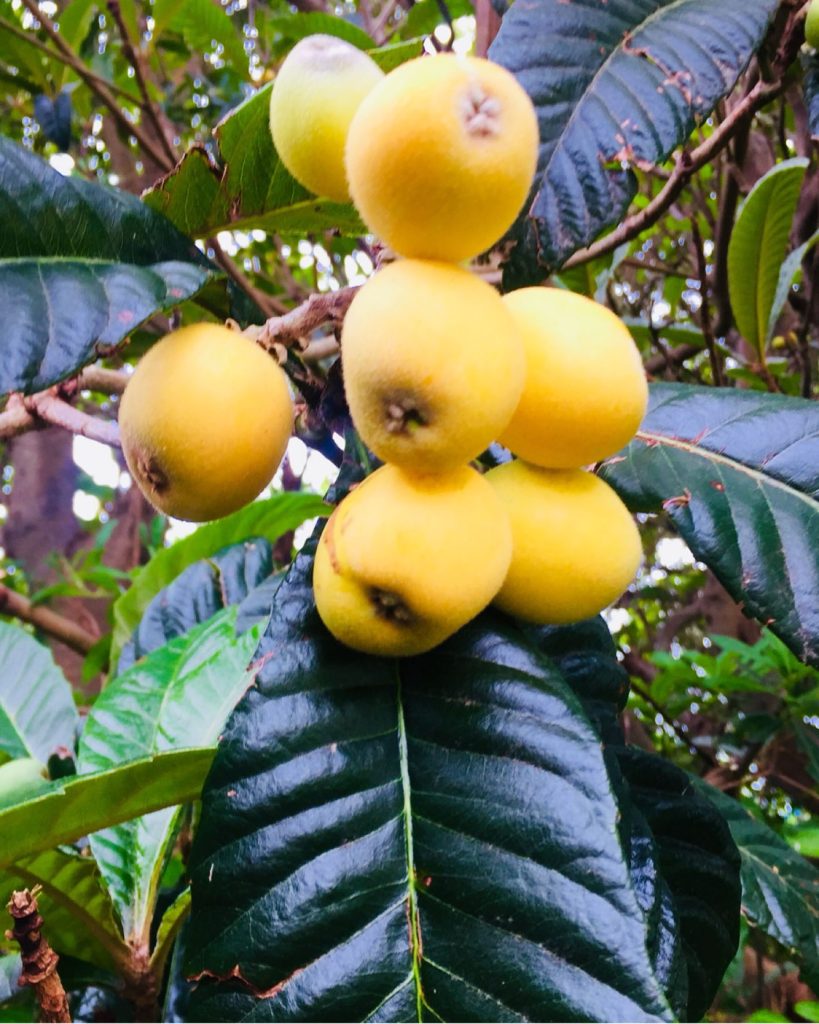
When I was a child, I often went to Awaji Island with my great-uncle, who was a master of Joruri (a form of Japanese narrative music). He had disciples and was teaching at a relative’s house. Around this time, when the rainy season was approaching, there were plenty of biwa (loquats) growing, and I enjoyed picking and eating them fresh. The biwa’s place of origin is in the southwestern part of China (Chongqing and Hubei Province), but it is said that they were brought to Japan over 1500 years ago. Especially during the Edo period, biwa cultivation flourished, and monks at temples performed biwa leaf therapy, which had been passed down from China, to the temple patrons. As a result, even today, you can see many biwa trees in temples. The biwa, with its leaves called “biwa yo” and seeds called “biwa kaku,” has been cherished as a folk remedy for coughs and other ailments up to the present day, being referred to as the “Great King Medicine Tree.” It was from the late Edo period that the cultivation of biwa as a fruit became popular. It began when a woman named Miura Shio from Mogi, Nagasaki received Chinese loquat seeds from a Chinese interpreter and planted them on her childhood home, and they have since spread throughout the country as Mogi loquats.This led to the spread of loquats, known as Motegi Biwa, across the country. Even today, loquats from Nagasaki account for more than 30% of the national production, making it the largest loquat-producing area in Japan.
子供の頃、浄瑠璃の師匠をしていた大叔父に連れられて淡路島によく行きました。お弟子さんがいて、親戚の家で教えていたからです。梅雨も近くなる今頃に行くとビワ(枇杷)の実がたくさん出来ていて、捥ぎたてを食べるのが楽しみでした。枇杷の原産地は中国南西部(重慶および湖北省)ですが、日本には1500年前には持ち込まれていたそうです。特に江戸時代にはビワの栽培が盛んになり、寺の僧侶が檀家の人々に中国から伝わったビワの葉療法を行ったため、今でも寺にはビワの木が多く見かけます。ビワは、葉は枇杷葉(びわよう)、種子は枇杷核(びわかく)とよばれる生薬で、「大薬王樹」とよばれて今日まで咳止めなどの民間良薬として親しまれてきました。果物として栽培が盛んになったのは江戸時代末期からです。長崎市茂木出身の三浦シヲという女性が中国語の通訳から中国ビワの種を譲り受け、生家に蒔いたことに始まり、茂木ビワとして全国に広まりました。今でも長崎のビワは全国の生産量の30%以上を占めており、日本最大のビワ産地です。
